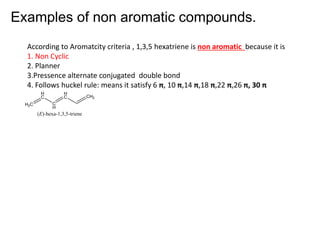Have you ever felt like organic chemistry is just a big, confusing jumble of letters and numbers? Like trying to solve a puzzle where the pieces keep changing shape? Well, fear not, my fellow chemistry enthusiasts, for today we are diving into the world of aromatic and aliphatic compounds. It’s time to unravel the mysteries of these funky chemical structures and emerge victorious as masters of organic chemistry! So grab your lab coat and safety goggles, because we’re about to take a wild ride through the weird and wonderful world of aromatic and aliphatic compounds. Let’s get nerdy, y’all!
Key Differences Between Aromatic and Aliphatic Compounds
So, you’re probably wondering what the heck is the difference between aromatic and aliphatic compounds. Well, buckle up because I’m about to lay down some knowledge bombs for you.
First things first, aromatic compounds are like the divas of the chemical world. They have this special thing called a benzene ring that makes them super special and unique. Aliphatic compounds, on the other hand, are like the plain Janes of the bunch. They don’t have any fancy rings hanging around.
Another key difference is that aromatic compounds have this cool thing called resonance that allows their electrons to move around freely. It’s like a chemical dance party in there! Aliphatic compounds are a bit more reserved and keep their electrons in check.
And let’s not forget about the smells. Aromatic compounds are often super fragrant and can be found in things like perfume and flowers. Aliphatic compounds, on the other hand, don’t really have much of a scent. They’re like that person at the party who just blends into the background.

Structural Characteristics of Aromatic Compounds
So, you wanna know what makes aromatic compounds so special, huh? Well, let me tell you, they’ve got some seriously funky structural characteristics that set them apart from the rest of the chemical world.
First off, these bad boys are all about those alternating double bonds. Yep, you heard me right. Aromatic compounds have a ring structure with a delocalized π system, making them oh-so-stable and oh-so-sweet-smelling. It’s like they’ve got this magnetic pull that just keeps those electrons happy and content.
And don’t even get me started on their electron clouds. These little clouds of joy are all over the place, thanks to those π electrons just hanging out and basking in the glory of resonance. It’s like a party in a molecule, and everyone’s invited!
But wait, there’s more! Aromatic compounds are also known for their planar structure, which means they’re as flat as a pancake. So, not only are they stable and aromatic, but they’ve also got some serious style. I mean, who wouldn’t want to be a part of that chemical clique?

Structural Characteristics of Aliphatic Compounds
Aliphatic compounds are like the quirky cousins of the chemical world – they don’t quite fit in with the rest of the molecules! They have some unique structural characteristics that set them apart from their aromatic counterparts.
One of the defining features of aliphatic compounds is their straight-chain or branched-chain structure. It’s like they never learned how to follow the rules of cyclic compounds! Instead, they prefer to go their own way, zigzagging around like a rebellious teenager.
Another fun fact about aliphatic compounds is their lack of aromaticity. They’re like the black sheep of the chemical family, never quite fitting in with the aromatic crowd. But hey, who needs aromaticity when you’ve got good old-fashioned straight chains and branches?
Despite their unconventional ways, aliphatic compounds are actually quite versatile. They can be saturated or unsaturated, alicyclic or acyclic – the possibilities are endless! So next time you come across an aliphatic compound, give it a high-five for its unique structural characteristics.

Chemical Properties of Aromatic Compounds
When it comes to aromatic compounds, their chemical properties are nothing short of fascinating. These compounds are like the Kardashians of the chemical world – they’re flashy, distinctive, and always making a statement.
One of the most intriguing things about aromatic compounds is their ability to undergo substitution reactions. It’s like they’re constantly changing outfits at a red carpet event – one minute they’re wearing a methyl group, and the next they’re rocking a nitro group.
Another noteworthy chemical property of aromatic compounds is their stability. They’re like the cool kids in high school who never seem to get frazzled by the drama around them. Thanks to their delocalized electrons, aromatic compounds are incredibly stable and resistant to change.
And let’s not forget about their aromaticity – it’s like their signature scent that everyone recognizes. Aromatic compounds have a unique ring structure that sets them apart from the rest, making them instantly recognizable and undeniably cool.
Chemical Properties of Aliphatic Compounds
Aliphatic compounds are like the wild cousins of the chemical family – they come with their own set of unique properties and quirks that keep chemists on their toes. These compounds love to shake things up with their versatile chemical reactions and characteristics.
One of the most interesting is their ability to undergo addition reactions. This means that they can easily bond with other molecules by adding atoms or groups to their carbon-carbon double bonds. Talk about making friends in all the right places!
Another fun fact about aliphatic compounds is their love for solvents. These compounds just can’t get enough of dissolving in various liquids and forming solutions. It’s like they’re the life of the party, always mingling and getting along with everyone.
And let’s not forget about their knack for forming functional groups. Aliphatic compounds are the masters of transformation, easily converting into alcohols, aldehydes, ketones, and so much more. They’re like the chameleons of the chemical world, constantly changing and adapting to their surroundings.
Examples of Aromatic Compounds in Everyday Life
Ever wondered why your morning cup of coffee smells so enticing? That’s because of the aromatic compound known as caffeine! This molecule not only gives your brew its delightful aroma but also provides you with the burst of energy needed to start your day. So, next time you take a whiff of that steaming cup, remember to thank caffeine for keeping you awake and functional.
Another common aromatic compound making its way into our lives is vanillin. Found in vanilla beans, this delightful molecule is responsible for the sweet, comforting scent and flavor of vanilla. From your favorite dessert to scented candles, vanillin is everywhere, adding a touch of warmth and sweetness to your day. Who knew that something so simple could bring so much joy!
Have you ever walked past a patch of fresh roses and felt an instant uplift in your mood? You can thank phenylethyl alcohol for that! This aromatic compound is what gives roses their gorgeous fragrance, making them a popular choice for perfumes, lotions, and aromatherapy. So, the next time you stop to smell the roses, remember to appreciate the magic of phenylethyl alcohol!
Examples of Aliphatic Compounds Commonly Encountered in Organic Chemistry
Aliphatic compounds are like the unsung heroes of organic chemistry – they may not be as flashy as aromatic compounds, but they are essential players in the world of organic molecules. Here are some examples of aliphatic compounds that you’re likely to encounter in your organic chemistry adventures:
- Alkanes: These are the simplest aliphatic compounds, made up of carbon-carbon single bonds. They’re the organic chemistry equivalent of a plain white t-shirt – basic, but versatile. Think of methane, ethane, and propane – the building blocks of larger aliphatic compounds.
- Alkenes: Double trouble! Alkenes are aliphatic compounds with carbon-carbon double bonds. They bring a little bit of spice to the party, like a side of jalapenos in your otherwise bland dish. Ethylene and propylene are examples of alkenes that you’ll come across.
- Alkynes: Triple the fun with alkynes! These aliphatic compounds have carbon-carbon triple bonds, making them the daredevils of the organic world. Acetylene is a prime example of an alkyne – it’s like the Evel Knievel of aliphatic compounds, always pushing the limits.
So, next time you’re feeling overwhelmed by the complexities of organic chemistry, just remember that aliphatic compounds are there to keep things grounded. They may not be as showy as their aromatic counterparts, but they play a crucial role in the molecular symphony that is organic chemistry. Give them some love!
FAQs
What are aromatic compounds?
Aromatic compounds are like the fancy perfumes of the organic chemistry world - they have a special kind of smell that makes them stand out. They are typically characterized by a ring of carbon atoms that are connected by alternating double bonds.
How do aromatic compounds differ from aliphatic compounds?
Well, whereas aromatic compounds are like the cool kids with their fancy rings of carbon, aliphatic compounds are more like the wallflowers at the organic chemistry dance. They are made up of straight or branched chains of carbon atoms, lacking the alluring ring structure of aromatics.
Why are aromatic compounds so… aromatic?
Good question, dear reader! It all comes down to the pi-electron delocalization within the ring structure of aromatic compounds. This delocalization leads to extra stability, which in turn gives these compounds their unique, pleasant smells.
Can you give an example of an aromatic compound?
Of course! One of the most well-known aromatic compounds is benzene. It’s like the perfume supermodel of the organic chemistry world - everyone knows its name and admires its elegant ring structure.
How are aliphatic compounds used in everyday life?
Aliphatic compounds may not have the same allure as aromatic compounds, but they are still incredibly useful in everyday life. They can be found in everything from plastics to pharmaceuticals, showcasing their versatility and importance in various industries.
Do aromatic and aliphatic compounds interact with each other in any way?
Oh, they definitely mingle at the organic chemistry party! In fact, some reactions involve the transformation of aliphatic compounds into aromatic ones, and vice versa. It’s like a chemistry love story - opposites attract, and sometimes, they even transform into one another.
—
Time to Get Nosing!
Now that you’ve got the lowdown on aromatic and aliphatic compounds in organic chemistry, you’re ready to impress your friends with your newfound chemistry knowledge. So go ahead, take a whiff of that perfume or study the structure of your favorite cooking oil – you’ll be able to identify whether it’s aromatic or aliphatic in no time. Who knew molecules could be so fun and fragrant? Keep exploring the world of organic chemistry, and remember, always follow your nose!






